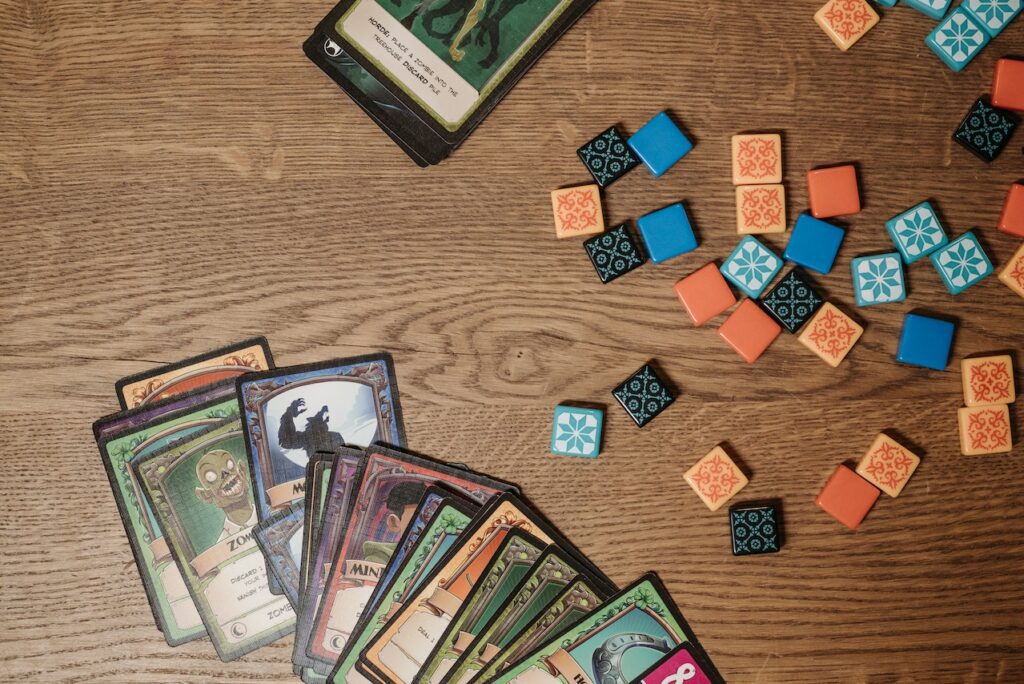Mental agility matters more than ever for retirees! As we age, cognitive functions may decline. Fear not—brain exercise is the easy solution. Remember, “use it or lose it.”Mental agility is essential for a fulfilling retirement. Board games fit the bill.
Board games refresh your mind, particularly in retirement. They’re a brain exercise that makes thinking, planning, and problem-solving fun.
Good board games include more than simply moving pieces. Challenge your memory, improve your decision-making, strategic thinking, and problem-solving to increase mental agility. It’s even more thrilling that many board games include history, culture, geography, and themes. This fosters a lifetime love of study and curiosity.
Don’t forget imagination! Board games need creativity and rule-following to succeed. A lovely blend of structure and creativity. The games in this list are chosen for cognitive fitness and fun. They challenge and improve your mental powers while providing enjoyment and relaxation.
But there’s more. Board games are a great method for retirees to connect, discuss, and stay smart. This article guides retirees like you through the wonderful world of board games. From old classics to new releases, each game on our list has its own benefits and challenges to keep you thinking. A nice reminder that brain training can be enjoyable!
These interesting board games can keep you mentally stimulated and entertained in retirement, whether you’re an expert or novice player!

“Ticket to Ride”
Introducing “Ticket to Ride,” a compelling board game for retirees looking to stay smart and enjoy their free time. This captivating game blends strategy, planning, and history.
Alan R. Moon’s 2004 Spiel des Jahres winner, brought to life by Days of Wonder, is a fun method to improve cognition, socialize, and learn geography and history.
This game offers plenty of fun. An extensive North American railroad route board map, 240 colorful train cars, 144 gorgeously painted cards, five wooden score markers, and a rule book are included. The robust, well-designed components promise many hours of fun.
This treasure mine of enjoyment is accessible to board game beginners. Each player chooses a color and receives 45 railway cars, a score marker, four train cards, and three destination ticket cards. Each disguised destination ticket card reveals two destinations the player wants to reach by the game’s end.
Draw new train cards, secure routes by expanding train cards matching in color and length, or get extra destination tickets each round. Play continues in turns until one player has two or less colored train cars, ending the game. Completed destination tickets, the longest continuous route, and gaming routes get points.
Besides pleasure, “Ticket to Ride” is informative. It requires smart moves to fulfill destination tickets while blocking opponents. Planning complexity activates the prefrontal cortex. Players must recall intended courses, holding cards, and probable competing routes to succeed, testing their memory.
For more than just a board game, “Ticket to Ride” takes players around North America for strategic discussion, memory development, and companionship. Retirees seeking a fun, engaging, and profitable hobby should take advantage of this opportunity.
Carcassonne
This game pack encompasses a rulebook, a scoring track, 72 magnificently illustrated land tiles, 40 vibrant followers (meeples), and a foundational tile. These elements boast superior craftsmanship, ensuring their longevity across numerous play sessions.
The gameplay presents a straightforward experience suited to participants of all expertise levels. Commencing with a singular land tile—the initial tile—positioned at the center of the table, each player, in turn, selects a random land tile and situates it beside an existing one, thus expanding the terrain. Compatibility with the terrain categories of neighboring tiles (cities, roads, monasteries, or fields) is of the essence.
This intricate puzzle engages players in managing resources, anticipating opponents’ moves, and forging strategic partnerships. Deliberation over tile placements and the distribution of followers is pivotal to maximizing point accrual while simultaneously impeding rivals’ progress.
Engagement in this gameplay cultivates cognitive abilities encompassing problem-solving, planning, and critical analysis, demanding strategic thought and decision-making. The necessity to adapt to ever-changing landscapes and optimize tile arrangements keeps the mind agile.
This gameplay accommodates 2 to 5 participants, rendering it an excellent choice for retirees seeking to engage with friends or family. It fosters dialogue, cooperation, and friendly rivalry, engendering memorable instances and reinforcing social connections. Moreover, it champions personal leisure, mirth, and affiliation.
This game likewise empowers players to forge their realm, shaping the landscape through tile placements and the assignment of followers. The expansion of cities, roads, and farms can be vividly envisaged as the world takes form.
In conclusion, this captivating board game extends retirees a gratifying and enriching experience. From the intellectual stimulation stemming from strategic decision-making to the social interaction and imaginative expression it fosters, the game bolsters cognitive prowess, nurtures social bonds, and encourages innovative contemplation.
Thus, whether one seeks to keep their mind agile, relish social connections, or simply revel in merriment, this game presents a universe of prospects. Embark on the construction of a medieval panorama, explore strategic domains, and embrace amiable rivalry within a realm characterized by ingenuity, connection, and exhilaration.
YOU MAY ALSO LIKE: 7 Simple Ways to Slash Your Risk of Dementia, According to Doctors
Codenames
“Codenames,” designed by Vlaada Chvátil and published by Czech Games Edition in 2015, is a captivating and intellectually stimulating board game that challenges players to communicate and decipher coded messages using word associations. Retirees and others seeking mental stimulation and social interaction will enjoy this game.
The game pack comprises a rulebook, 16 agent cards in two distinct colors, 1 double agent card, 7 cards depicting innocent bystanders, 1 assassin card, 40 key cards, 200 double-sided codename cards, and a card stand. These components boast exceptional quality, ensuring they endure through numerous rounds of play.
This intriguing game involves teams composed of a spymaster and field operatives. The objective is to unveil all the covert agents concealed within a grid of codename cards before the opposing team accomplishes the same.
The spymaster furnishes single-word clues that pertain to multiple codename cards arrayed on the table, while the field operatives endeavor to ascertain the accurate cards. The challenge lies in steering clear of cards tied to the rival team, innocent bystanders, and most critically, the assassin, which results in an instantaneous defeat. The spymaster’s cues demand inventiveness and precision, compelling meticulous scrutiny of the cards on display and effective collaboration.
Furthermore, it fosters effective communication and team synergy. The need to collectively decipher the spymaster’s clues and pinpoint the correct codename cards incentivizes social engagement, attentive listening, and camaraderie. This allows retirees to partake in engaging conversations, exchange anecdotes, and savor companionship.
The spymaster is tasked with devising shrewd clues that interlink multiple codename cards, a feat demanding imaginative associations and thinking outside conventional parameters. This particular facet of the game fosters inventive thought and cognitive expansion, broadening players’ intellectual horizons.
Embrace the opportunity to assess your cognitive prowess, ignite creativity, and fortify connections. A game of “Codenames” is certain to transform any evening spent with friends or family into an unforgettable affair.
So, indulge in this engaging wordplay and strategy game to kindle your inquisitiveness, hone your acumen, and elevate your social interactions. Every hint offered and every guess made propels you nearer to triumph. Decode the enigma, unveil the riddles, and relish in intellectual camaraderie.

Settlers of Catan
“Settlers of Catan,” created by Klaus Teuber and released in 1995, is a strategy board game set on the mythical island of Catan. This board game has become a classic. Retirees love “Settlers of Catan”‘s resource management, bargaining, and strategic decision-making.
The components for recreating the Catan experience encompass a rulebook, a hexagonal game board representing the Catan landscape, resource cards, development cards, construction elements, a token for the game’s antagonist, number tokens, and a dice. These components, crafted to the highest quality standards, ensure enduring enjoyment during numerous rounds of play.
Complete engagement in this immersive game necessitates a solid grasp of its rules. Players, in sequence, engage in constructing cities and thoroughfares across the Catan expanse to kick off the game. Hexagonal tiles depict various terrains—hills, fields, forests, mountains, and meadows—each adorned with number tokens denoting production values. With thoughtful consideration, players establish settlements surrounding these tiles to amass resources.
Each round, dice are rolled to determine which terrain tiles generate resources. Those who possess settlements neighboring these terrains gather resources like brick, timber, wool, grain, or ore. Utilizing these resources, players can construct roads, settlements, cities, and development cards. The presence of antagonist tokens may disrupt resource production and result in pilfering from fellow players.
“Settlers of Catan” actively encourages negotiation and social interaction. The game’s mechanics facilitate resource exchange, collaboration, and congenial competition. Through negotiation, trade, and resource accumulation, players collaboratively plan to advance their respective communities. This social aspect augments communication, interpersonal connections, and the overall enjoyment of the gaming experience.
Furthermore, “Settlers of Catan” nurtures growth and achievement. Players relish a sense of accomplishment as they astutely establish settlements and thoroughfares, accumulate resources, and progress to constructing cities. The presence of achievable goals within the game fosters a gratifying sensation of fulfillment.
This game holds historical significance as one of the initial German-style board games to transcend European boundaries in popularity. Its widespread acclaim catalyzed the global proliferation of European-style board games, sparking a renaissance in the realm of board gaming.
“Settlers of Catan” emerges as a captivating board game that retirees are sure to relish. By fostering intellectual engagement, social bonds, and a sense of achievement through strategic gameplay, resource management, negotiation, and social participation, the game offers multifaceted appeal.
Pandemic
“Pandemic,” a cooperative board game designed by Matt Leacock and published by Z-Man Games in 2008, challenges players to work together to stop the spread of deadly diseases around the world. Retirees in the US will find this game challenging, cooperative, and intellectually stimulating.
The collection encompasses a rulebook, a game board depicting a world map, distinct role cards, player pawns, infection cards, cards representing outbreaks, illness cubes, and a research station. These superior-grade components ensure lasting durability and a rewarding gaming experience.
Commencing play entails participants adopting diverse roles, each with its distinct capabilities and expertise, in order to counteract the menace of four lethal maladies: those colored yellow, blue, black, and red. Every game turn presents players the options of relocating between cities, tending to illnesses, exchanging knowledge, or establishing research stations.
Cards representing infections dictate which cities fall victim to contagion, while instances of epidemic escalate the propagation of disease, thereby heightening the challenges associated with containment. Players must tactically manage their actions, strategize their movements, and collaboratively labor to forestall rampant outbreaks and expedite the discovery of cures before time expires.
Aptly tailored for retirees, this game fosters social interplay, attentive listening, and effective teamwork.
This game also poses challenges to strategic forethought, critical analysis, and innovative solutions. Players must scrutinize the game board, gauge the severity of outbreaks, prioritize their actions, and judiciously allocate resources. These cognitive exercises bolster decision-making prowess, the ability to recognize patterns, and the art of managing resources.













